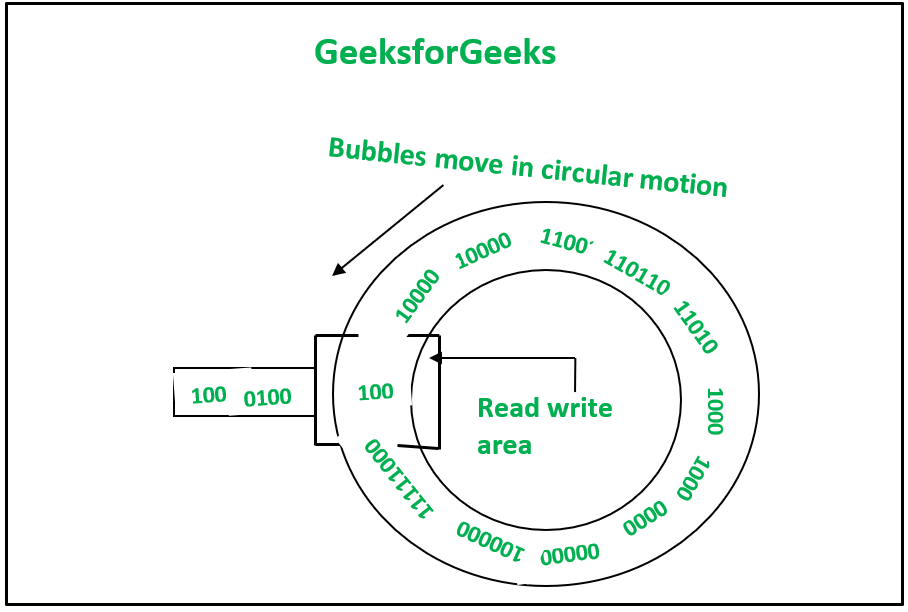What is a Bubble Memory ?
Last Updated :
20 May, 2022
Bubble memory is also known as Magnetic Bubble Memory. The inventor Andrew Bobeck invented bubble memory in the 1970s at Bell Labs. Bubble memory comes under the category of non-volatile computer memory. The representation of data is in the form of magnetic bubbles (tiny circular areas) as it uses a thin film of magnetic material. Each bubble stores 1 bit of data. As it is non-volatile, data is retained in magnetic bubbles when power is turned off.
The arrangement of magnetic material is made in such a way that a series of parallel tracks is formed for moving the bubbles whenever the external magnetic field is applied. It was only a few square inches in size, which included a thin film magnetic recording layer in which bubbles (bits) were electromagnetically created in circular strings.
The rotation of bubbles corresponds to the equivalent of a read/write head for their reading or writing. The bubbles are read by bringing them to the material’s edge, where they may be read by a normal magnetic pickup, and then rewritten on the far side to keep the memory cycling.
Advantages:
- The power usage is less in bubble memory.
- The functional packing density is high in bubble memory.
- It is more durable than disc memory since it has no moving parts.
- The most vital feature was its ruggedness, which made the military employ the technology even after it failed in the market. Hence, many people concluded that it can be thought of as a “universal memory” that could be utilized for all kinds of storage. Bubble memory is resistant to extreme temperatures, dust, humidity, and radiation while also being removable.

Disadvantages:
- It has limited application because it is to be used where these features prove to be useful. However, the technology’s initial promise (pioneered by Bell Telephone Laboratories) has not been fully fulfilled because production prices have exceeded expectations.
- Bubble memory was never widely employed since other non-volatile memory formats, such as EEPROM, are faster and less expensive.
- It was widely used for some time in the 1970s. But due to the massive loops required by a large bubble memory, accessing a bit requires cycling through a large number of other bits first leading to slow speed. So, in the 1980s, with the advancement in technology, it was replaced by hard drives and semiconductor memories.
Like Article
Suggest improvement
Share your thoughts in the comments
Please Login to comment...